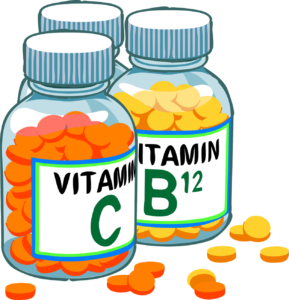Mixed Messages: Tetanus Booster Not Needed
 By Rosanne Lindsay, Naturopath
By Rosanne Lindsay, Naturopath
“When we looked at the levels of immunity among 546 adults, we realized that antibody titers against tetanus and diphtheria lasted much longer then previously believed.” – Mark K. Slifka, Ph.D., professor, Oregon National Primate Research Center at OHSU
In a 2016 study published in the Journal Clinical Infectious Disease, Dr. Mark Slifka and his colleagues looked at the duration of immunity to tetanus and diphtheria to provide an evidence-based evaluation of the current adult vaccine schedule. Their analysis showed that adults remain protected against tetanus and diphtheria for at least 30 years without the need for further booster shots. In 2020, Dr. Slifka’s team followed up with a new study that recommended no boosters are needed for Tetanus and Diptheria (i.e., TDaP vaccine).
Other countries, including the United Kingdom, recommend no adult tetanus booster shots – and the World Health Organization recommends only a single adult booster vaccination at the time of first pregnancy or during military service. Once upon a time, no vaccines were recommended during pregnancy. Children only received a handful of shots. However, as the years go by, not only is the mantra “the more the better,” but a new generation of experimental mRNA vaccines are the new normal.
Mixed Messages
When you compare published science to propaganda, you get mixed messages. As medical science provides evidence on the irrelevance of booster shots, why then does the CDC continue to recommend a 10-year tetanus booster shot for adults?
- Because any changes to the vaccine scheduled must be approved by the Advisory Committee on Immunization Practices (ACIP), the group responsible for determining the vaccination schedules in the U.S. And the ACIP is not making any reductions to the vaccine schedule, especially not since COVID.
- vaccine science continues to promote a $2+ billion market that promises future drugs be deployed as mRNA vaccines.
Note: An mRNA is the single-stranded molecule that sets up a temporary protein factory outside a cell’s nucleus and attaches to ribosomes. This cellular machinery translates its sequence of four kinds of nucleosides—adenosine, cytidine, uridine, and guanosine—into a protein. In most all cases, it is a protein the body has never seen before, with unknown consequences to match.
The willingness of pharmaceutical giants and investors to bet on that premise to the tune of nearly $2 billion has unleashed waves of both hype and skepticism. – Science, 2020
 The Nature of Healing: Heal the Body, Heal the Planet by Rosanne Lindsay, N.D. M.A.
The Nature of Healing: Heal the Body, Heal the Planet by Rosanne Lindsay, N.D. M.A.
Shot Happy
 Western allopathic medicine places its value in evidence-based medicine, based on The Germ Theory. The Germ Theory blames an invisible “germ” for human disease. The only remedy against the germ is the vaccine. So then, why do experts ignore their own science when it shows the evidence of booster shots are problematic and unnecessary?
Western allopathic medicine places its value in evidence-based medicine, based on The Germ Theory. The Germ Theory blames an invisible “germ” for human disease. The only remedy against the germ is the vaccine. So then, why do experts ignore their own science when it shows the evidence of booster shots are problematic and unnecessary?
The authors stated that, “the odds of dying from tetanus in the U.S. are approximately 1 in 100 million.” Diphtheria is even more rare.
They suggested that modification of the adult vaccination schedule could save millions in U.S. health care costs:
… changing to a 30-year schedule would reduce the costs of vaccination by two-thirds, a reduction of approximately $280 million per year in health care costs, and approximately $1 billion in cost savings within four years.
Just the Facts
Natural Immunity harnesses the body’s innate immune system against disease, described under The Terrain Theory. But, what do you do about the “emergency” that happens that finds you in ER with a child who needs stitches from a cut? Here’s how one Mom handled a visit to the doctor, by asking questions and letting the doctor state the facts.
Doc: We’re going to give her a tetanus vaccine.
Mom: Really? What brand and configuration did you have in mind?
Doc: Just Tetanus.
Mom: You mean the TDaP?
Doc: Well, yes.
Mom: So, you want to give my child a vaccine for 3 diseases when you’re only concerned about one?
Doc: It’s the only way it comes. (Untrue: it also comes as the Tetanus Immune globulin, TIG).
Mom: So… How long will it take for the vaccine to help her create antibodies against Tetanus?
Doc: About 3 weeks.
Mom: If this wound contains Tetanus spores in the correct environment, how long before the spores start producing toxins causing lockjaw then death?
Doc: Immediately.
Mom: So you want to give her a vaccine that she won’t mount an immune response with until about a week after SHE’S DEAD?
They left without the TDaP or TiG. ~Dee R.F.
Vitamin C & Tetanus
 According to Suzanne Humphries, MD., Vitamin C deficiency is a common underlying factor in many invasive disease conditions including Whooping Cough and Tetanus. She writes:
According to Suzanne Humphries, MD., Vitamin C deficiency is a common underlying factor in many invasive disease conditions including Whooping Cough and Tetanus. She writes:
The functions of vitamin C and ascorbate in any toxin-mediated disease (which includes tetanus, diphtheria, whooping cough, Staph. aureus, Strep. A, meningococcal invasive disease, pneumococcal invasive disease, etc.), are numerous. Three of the many fundamental functions of ascorbate are strengthening cellular and vascular collagen bonds, detoxifying the body, and keeping mitochondria running properly. The very common reason why people who are ill for a long time have extreme lethargy—is lack of vitamin C[1]. You can’t have functioning mitochondria without ascorbate. And it’s no fluke that if a competent doctor tests babies after SIDS, they can often find undetectable vitamin C/ascorbate levels, and bone evidence of scurvy. Okamoto (author) has found a reproducible experimental relationship between SIDS, ascorbate deficiency, and carnitine deficiency.[2] Does that mean oxidative stress by vaccination depletes vitamin levels?
According to some studies, Vitamin C is the optimal nonspecific antidote for all toxins and all oxidative stress. Vitamin C augments the antibody response of the body to the vaccination. In Dr. Humphries 2012 article on Vitamin C, she writes:
Vaccinated babies, children, and adults are not able to mount the comprehensive bronchial and cellular immunity [J Mucosal Immunology 2012]– which an unvaccinated person naturally develops in the course of the disease. This incorrect immunity “learned” from the vaccine (referred to by Dr James Cherry as “original antigenic sin” [Clin Infectious Disease, 2004]), is then the same way the body then responds to a subsequent infection. If the first stimulation was to vaccine antigens, then upon the exposure to the disease, the vaccinated person will mount an inferior response, compared to a child who has convalesced from a natural infection.
According to Dr. Thomas Levy, MD, JD:
For optimal antibody support and toxin neutralization, it would be good to dose the vitamin C for three to five days before the shot(s) and to continue the vitamin C for at least two to three days afterwards. When dealing with infants and very young children, a 1,000 mg dose of liposome-encapsulated vitamin C mixed into something like yogurt can work very well.
Injected Animals
Vaccines for diseases like distemper and canine parvovirus, once administered to adult animals, provide lifetime immunity. And yet many vets continue to vaccinate annually. –Lifelong Immunity, Why Vets Are Pushing Back, 2022
 Some pet owners say that over-vaccination is jeopardizing their pet’s health, causing everything from swelling to autoimmune disorders and more. And these human-like diseases in pets have been rising since… yes, the introduction of the modified live virus vaccine.
Some pet owners say that over-vaccination is jeopardizing their pet’s health, causing everything from swelling to autoimmune disorders and more. And these human-like diseases in pets have been rising since… yes, the introduction of the modified live virus vaccine.
According to the Journal of Veterinary Medicine, August 2003, vaccines cause cancer in dogs at their injection sites. According to an article Science of Vaccine Damage:
The Purdue studies also found that vaccinated dogs were developing autoantibodies to their own collagen. About one quarter of all the protein in the body is collagen. Collagen provides structure to our bodies, protecting and supporting the softer tissues and connecting them with the skeleton. It is no wonder that Canine Health Concern’s 1997 study of 4,000 dogs showed a high number of dogs developing mobility problems shortly after they were vaccinated (noted in the 1997 book, What Vets Don’t Tell You About Vaccines).
Vaccines cause autoimmune haemolytic anaemia (JVM, Vol 10, No. 5, September/ October 1996; Merck Veterinary Manual), and arthritis. BVJ, May 1995 and Am Coll Vet Intern Med, 2000; 14:381). Epilepsy is a symptom of encephalitis, which, as we already know, can be caused by vaccines. What’s in a vaccine? Here is what you need to know about adverse reactions.
Ron Schultz, an immunologist at the School of Veterinary Medicine at the University of Wisconsin. and a long-time researcher of canine vaccines, finds immunity of many diseases can last a dog’s lifetime. He found that when dogs were exposed to viruses naturally, they developed lifetime immunity. Schultz says, “you don’t want to vaccinate an immune animal because the vaccine may cause a hypersensitivity reaction.” And, “After the second rabies vaccination, re-administration of rabies vaccine does not enhance the immune status of the patient at one or two year intervals.” Instead of a booster, consider doing antibody titers to document antibody levels.
The recommendation for annual re-vaccination is a practice that was officially started in 1978. This recommendation was made without any scientific validation of the need to booster immunity. – Dr. Schultz
Veterinarian, Dr. Schultz’ 2007 List of Adverse Events from Vaccines:
Common Reactions
Lethargy
Hair Loss, hair color change at injection site
Fever
Soreness
Stiffness
Refusal to eat
Conjunctivitis
Sneezing
Oral ulcers
Moderate Reactions
Immunosupression
Behavioral changes
Vitiligo
Weight loss (Cachexia)
Reduced milk production
Lameness
Granulomas/Abscesses
Hives
Faciale Edema
Atopy
Respiratory disease
Allergic uveitis (blue eye)
Severe Reactions
Vaccine injection site sarcomas
Anaphylaxis
Arthritis, polyarthritis
HOD hypertrophy osteodystrophy
Autoimmune hemolytic anemia
Immune Mediated Thrombocytopenia (IMTP)
Hemolytic disease of the newborn (neonatal Isoerythrolysis)
Thyroiditis
Glomerulonephritis
Disease or enhanced disease that the vaccine was designed to prevent
Myocarditis
Post vaccinal encephalitis or polyneuritis
Seizures
Animals & mRNA
 Fast forward to March of 2023 and the headlines read that 100 million animals have been injected with mRNA technology. Unknown to most, mRNA tech in animals was being developed in 2016. The focus of mRNA tech was three fold: 1) infectious disease vaccines, 2) cancer immunotherapies, and 3) protein replacement.
Fast forward to March of 2023 and the headlines read that 100 million animals have been injected with mRNA technology. Unknown to most, mRNA tech in animals was being developed in 2016. The focus of mRNA tech was three fold: 1) infectious disease vaccines, 2) cancer immunotherapies, and 3) protein replacement.
This means that Bayer and BioNTech have been working on livestock and companion animal mRNA vaccines for over six years…Without this knowledge, most people who consume meat, don’t know they are eating mRNA-injected meat that is still considered experimental.
While human vaccine studies can be tracked online at ClinicalTrials.gov and Pubmed, the USDA and/or the NIH have no method of tracking new vaccine tech, drugs or biologics for the animal market.
The advice from discerning vets?
- Feed your dog a balanced, species appropriate diet, including raw meat.
- Avoid as many toxins as you can – environmental toxins, drugs, antibiotics, and yes, vaccines.
- “The patient receives no benefit and may be placed at serious risk when an unnecessary vaccine is given. – Schultz, 2022
- Boost the immune system with natural supplements including turmeric, echinacea, goldenseal, oregano, and garlic.
- At the very least, question every vaccine that goes into your animal.
- change will have to come from the public who have to stop allowing the over-servicing. – Holistic vet Dr. Jordan
The Choice Is Yours
Navigating a maze of mixed messages in 2023 demands discernment, especially when the truth is not necessarily publicized. It matters that people read up on vaccine research to know the latest facts since there is no such thing as “settled science.”
It matters not whether you follow The Germ Theory or The Terrain Theory. In either case, you can discern the facts as they exist and make an informed choice. So, it is worth repeating: in 2016, medical science revealed that booster shots do little good when it comes to preserving immunity. The same authors confirmed their conclusions in 2022. However, the CDC’s Tetanus website ignores their own science, telling people that the TDaP booster is safe for all ages and adults should get the shot every 10 years. This proves, once again, that business comes before health.
Veterinarian science and Dr. Schultz says the same is true for dogs, “When exposed to viruses naturally, dogs develop lifetime immunity.” If pets are like people, then people develop lifelong immunity, too, au natural. And since your pets do not have a voice, it would be wise to question what is in the vial for them and for you. When it comes to natural health, there are always natural alternatives.
Comment from subscriber:
Dr. Saul would concur…
Some Horse-sense about Tetanus
Tetanus bacteria are found naturally, and always, in the bowels and droppings of horses. When deep wounds in humans (or even horses) are infected with tetanus bacteria, a toxin is produced which causes the illness also known as “lockjaw” Tetanus has nothing whatsoever to do with rust, by the way. You could go into a chemistry lab, open a jar of iron oxide (rust), rub it on your arm all day and not get tetanus. You could have pure iron oxide injected into your bloodstream or even eat it, and you would likely get sick. It would not, however, be tetanus.
The only reason an old rusty nail is associated with tetanus is that it might now be where horses had once been. Encased spores of tetanus bacteria can survive in a dormant state, like seeds, for eighty years. Stepping on a nail delivers the tetanus bacteria spores into the body as if from a dirty hypodermic needle. So tetanus shots are given to this day, even though horses are so rarely around us any more.
During the Civil War, horses were like trucks and cars are today, performing the same function of personnel and equipment transport. Wagons, cannons, ambulances and officers were all horse powered. Confederate cavalrymen J.E.B Stuart and Bedford Forest had thousands of horses with them at a time. Union cavalry forces were even larger. At the time of the Battle of Chancellorsville in 1863, Union cavalry general George Stoneman had some 9,000 horses at his command (Furgurson, 1992). Can you imagine what their camps must have been like?
Why are we horsing around with all these numbers? Let me get to my “mane” point: it is remarkable that there were so few cases of tetanus during the Civil War. Battlefield wounds were very numerous, very severe and very dirty. Blood and tissue and horse droppings were everywhere. Lockjaw cases were not. During the 1860’s, surgeons did not even wash their hands, let alone their instruments. Tetanus bacteria must have been literally everywhere, with countless infected, ghastly wounds to match. After a typical battle, thousands of men might lay with their innards on the ground. Forget your visions of neat uniforms and waxed mustaches and glory. Pain and disease and mud and filth and horses were this war.
In the course of the Civil War, medical records and statistics were maintained and published. This is how we know that many more soldiers were killed by sickness (fever and diarrhea in particular) than by bullets or cannon. Of the over 600,000 soldiers who died in the four years of conflict, at least two out of three died of disease.
We know the death rates from various types of amputation, which ranged from 20 to nearly 90 percent, depending on location. And, we know that “lockjaw” cases placed far down on the casualty lists, and numbered surprisingly few: 2,050 cases per 100,000 wounds, a rate of just over 2 percent (Miller, 1994). That, with no sterilization of medical instruments, and not a pair of clean hands in sight. And with all those horses around.
There were still one or two Civil War veterans alive when I was a very little boy in Rochester, New York. There also were just a few working horses left. I can remember horse teams drawing the huge rakes that swept the public beaches clean along Lake Ontario. The degree of tetanus exposure on that beach never occurred to most parents. When we cut ourselves, barefoot boys like myself often didn’t even tell our parents. Who wanted to be stuck with a hypodermic needle? A lot of the kids on those beaches had not had tetanus shots, and yet (as in the Civil War), the number of tetanus cases was near zero. I never even knew anyone who had had tetanus. It was, I think, more than just a matter of luck.
When it comes to eradicating tetanus, I think you could make as glowing an argument for the internal combustion engine as you can for vaccination. As gasoline powered vehicles totally replaced horses, there must have been drastic reductions in our exposure to tetanus bacteria.
To bend the needle a bit further, let’s look at another kind of injection against tetanus. Over forty years ago, Frederick R. Klenner, M.D. cured tetanus with massive doses of vitamin C (Klenner, 1954 a, b). In some treatments, Dr. Klenner used as much as 250,000 milligrams of vitamin C per day, most of it intravenously. Between 350 to 1,000 mg of vitamin C per kilogram body weight per day was his standard therapeutic oral dose. (Klenner, 1979). While he was indeed in favor of vaccination, Dr. Klenner described tetanus fatalities as being due to conventional medical treatments for the disease and not due to tetanus itself (Smith, 1988).
I offer neither an argument against horses nor against those who freely choose vaccination. This chapter is presented, like one side of a good debate, to get you past the sound bytes and to look into the subject yourself. The human body is almost unbelievably resilient. Perhaps a bridle needs to be put on over-praising or over-using the tetanus shot. Today, horses are rare and shots are the rule. Let us take a moment and accurately recall the days when it was the other way around. — Andrew W. Saul, doctoryourself.com/vaccination.html
More on the pioneering work of Dr. Fredrick Robert Klenner, MD
Some physicians would stand by and see their patient die rather than use ascorbic acid because in their finite minds it exists only as a vitamin. –F. R. Klenner, MD
Related articles:



